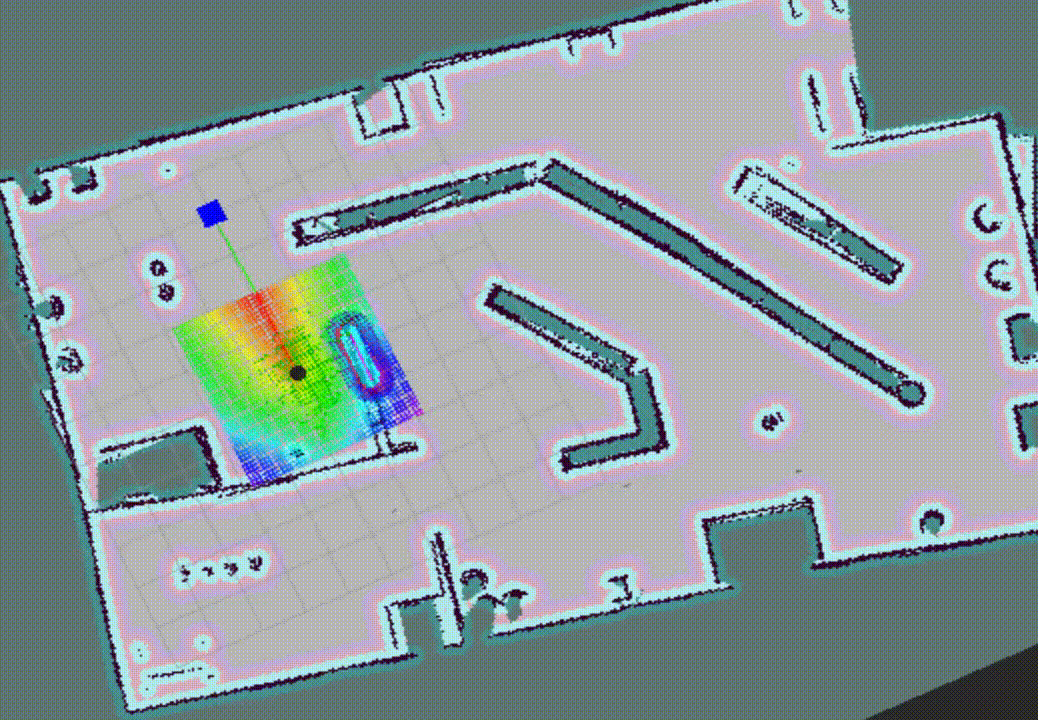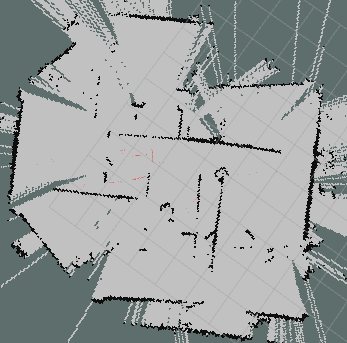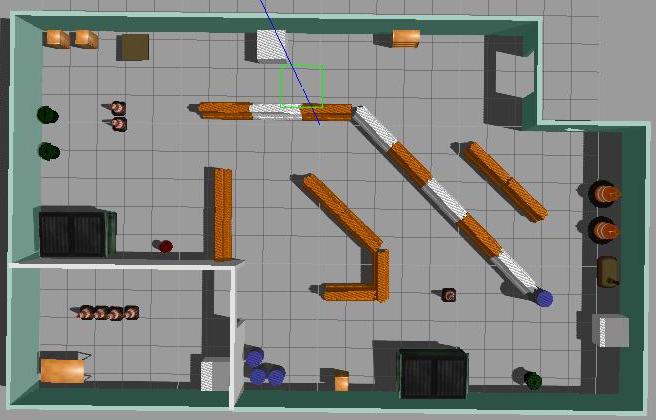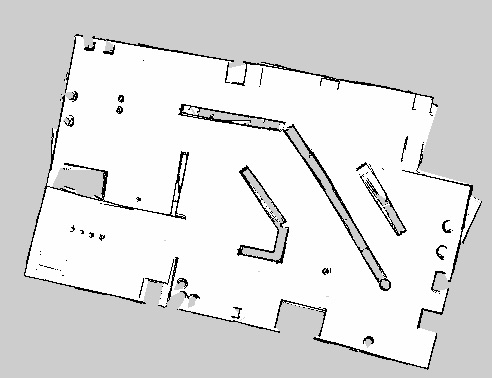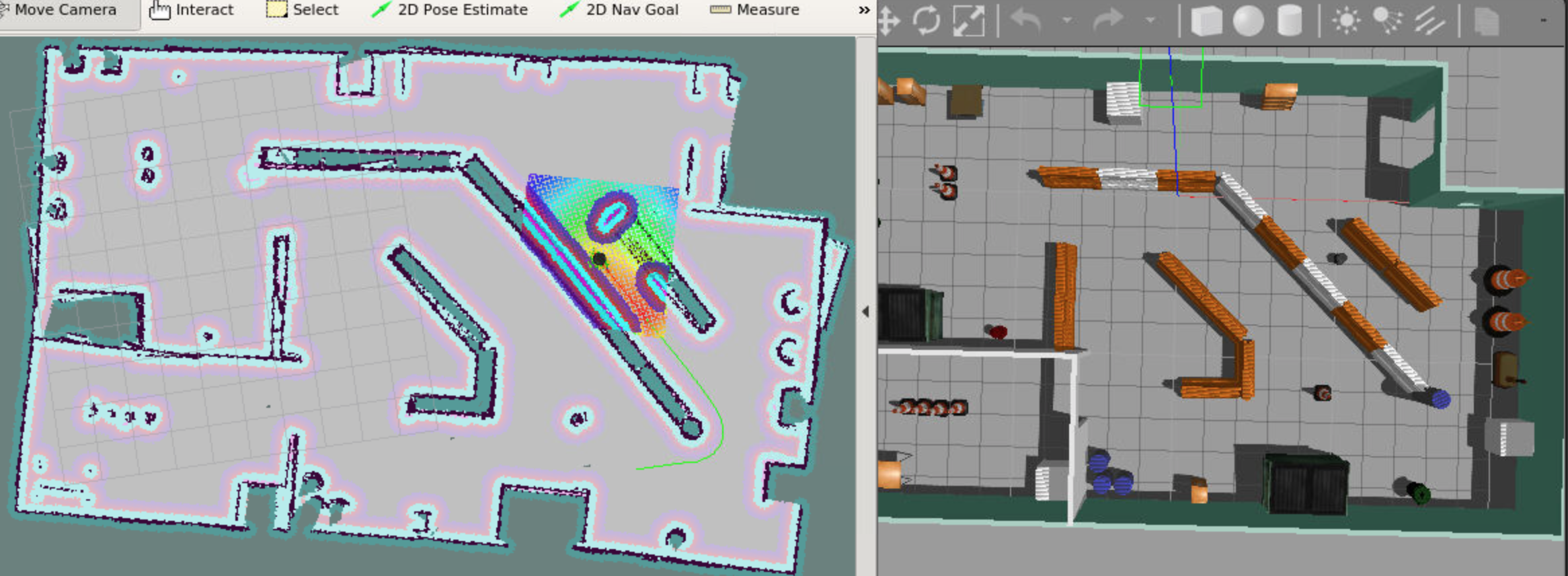Final project for Udacity's Robotics Software Engineer Nanodegree Program
Project Goals
The goal of this project was to design a robot's environment in gazebo and program the home-service robot that will map it's environment and autonomously navigate to pre-specified pickup and drop-off locations. For this one needed to:
- Design robot's environment with the Building Editor in Gazebo.
- Teleoperate the robot and manually test SLAM.
- Use the ROS navigation stack and manually command the robot using the 2D Nav Goal arrow in rviz to move to 2 different desired positions and orientations.
- Write a pick_objects node that commands the robot to move to the desired pickup and drop off zones.
- Write an add_markers node that subscribes to the robot odometry and publishes pick-up and drop-off markers to rviz.
- modify pick_objects node and add_markers node to establish communication between them, to complete desired home service robot implementation
(since I have not tested on multiple platforms, and versions, I am listing only the configuration I used)
- Ubuntu 16.04 OS with default make (>=4.1) and g++/gcc (>=5.4) packages
- Gazebo >= 7.0
- ROS Kinetic
- following ROS packages were used and the process of obtaining them is detailed below:
.
├── README.md
├── images
│ ├── ... ...
├── CMakeLists.txt
├── add_markers
│ ├── launch
│ │ └── home_service_rviz_config.launch
│ └── src
│ ├── add_markers.cpp
│ └── add_markers_test.cpp
│ ├── ... ...
├── config
│ └── marker_config.yaml
├── map
│ ├── building
│ │ ├── ... ...
│ ├── home_service.world
│ ├── home_service_map.pgm
│ ├── home_service_map.yaml
├── pick_objects
│ └── src
│ ├── pick_objects.cpp
│ └── pick_objects_test.cpp
│ ├── ... ...
├── rvizConfig
│ └── home_service.rviz
├── scripts
│ ├── add_marker.sh
│ ├── home_service.sh
│ ├── pick_objects.sh
│ ├── test_navigation.sh
│ └── test_slam.sh
├── slam_gmapping
│ ├── gmapping
│ |── ... ...
├── turtlebot
│ |── turtlebot_teleop
│ |── ... ...
├── turtlebot_interactions
│ |── turtlebot_rviz_launchers
│ |── ... ...
|── turtlebot_simulator
│ ├── turtlebot_gazebo
│ |── ... ...
This directory represents the main project's src folder structure with following contents
- README.md: this file.
- images - folder with images and videos for this report
- add_markers - add marker C++ node
- config - folder with configuration file to specify pick-up and drop-off locations
- map - map and gazebo world files
- pick_objects - pick-objects C++ node
- rvizConfig - folder with rViz configurations used with some launch scripts
- scripts - shell scripts
add_marker.sh- script for testing add_marker concept withadd_markers_test.cpphome_service.sh- main script for the home-service-robotpick_objects.sh- script for testing pick_objects concept withpick_objects_testtest_navigation.sh- script for testing navigationtest_slam.sh- script for performing SLAM and preparing map
- slam_gmapping - official ROS package with
gmapping_demo.launchfile - turtlebot - official ROS package with
keyboard_teleop.launchfile - turtlebot_interactions - official ROS package with
view_navigation.launchfile - turtlebot_simulator - official ROS package with
turtlebot_world.launchfile
Since the folder presented here comprises only of ROS package, one needs to first create a catkin workspace and initialize it. Also, note that the official ROS packaged are already included here, but their dependencies need to be installed; steps for this are given below.
Within your home directory, execute the following:
mkdir -p catkin_ws/src
cd catkin_ws/src
catkin_init_workspace
Within ~/catkin_ws/src/ download or clone folders of this repository:
cd ~/catkin_ws/src/
git clone https://github.com/viks8dm/home-service-robot.git
Install dependencies:
rosdep -i install gmapping -y
rosdep -i install turtlebot_teleop -y
rosdep -i install turtlebot_rviz_launchers -y
rosdep -i install turtlebot_gazebo -y
NOTE: If any of the official packages give error, I recommed you delete associated folder and clone with src folder using appropriate line from here:
git clone https://github.com/ros-perception/slam_gmapping.git
git clone https://github.com/turtlebot/turtlebot.git
git clone https://github.com/turtlebot/turtlebot_interactions.git
git clone https://github.com/turtlebot/turtlebot_simulator.git
Go back to catkin workspace and build it
cd ~/catkin_ws/
catkin_make
Specific applications can be launched using scripts provided. In this section I will go over how I have used these scripts.
For my world file I started with the gazebo-world I have used in past (like the one in https://github.com/viks8dm/mapping_ROS). However, during SLAM and map preparation I realized that this world had following flaws:
- it has very few features and a lot of open space. This leads to
gmappingerror with following messages:Scan Matching Failed, using odometry. Likelihood=0
- There were two carts in the model which were not fixed. So while the robot completed a loop and came back to a spot near one of the carts, the mapping algorithm was getting confused and resulting in image rotation in rviz, similar to that shown below.
Fig.1: gmapping-error sample
Hence I added features to the world and updated it to that shown here:
For SLAM-test go to src/scripts folder and run test_slam.sh script:
cd ~/catkin_ws/src/scripts
./test_slam.sh
This will launch:
turtlebot_world.launchto deploy turtlebot in my world with specific posegmapping_demo.launchto perform SLAMview_navigation.launchto observe map in rvizkeyboard_teleop.launchto manually control robot
After navigating the robot around multiple times, once I was satisfied with the map appearance in comparison to the world-file, I saved it using:
rosrun map_server map_saver -f <map-location-and-name>
The corresponding map looks as follows:
For localization testing, I used test_localization.sh as follows:
cd ~/catkin_ws/src/scripts
./test_localization.sh
This will launch:
turtlebot_world.launchto deploy turtlebot in my world with specific poseamcl_demo.launchto localize turtlebotview_navigation.launchto observe map in rviz
I used 2D Nav tab in rviz to manually point out to two different goals, one at a time, and direct the robot to reach them and orient itself with respect to them. A sample image is shown below and the sample video can be found here
To test robot's capability to reach multiple goals, as specified by the program (and not manually), I created pick_objects package and specifically pick_objects_test.cpp function. This can be tested following script which launches turtlebot, AMCL, rviz and pick_objects node:
cd ~/catkin_ws/src/scripts
./pick_objects.sh
To model a virtual object with markers in rviz, I created add_markers package and specifically add_markers_test.cpp function. This can be tested following script which launches turtlebot, AMCL, rviz and add_markers node:
cd ~/catkin_ws/src/scripts
./add_markers.sh
A sampe output is shown here:
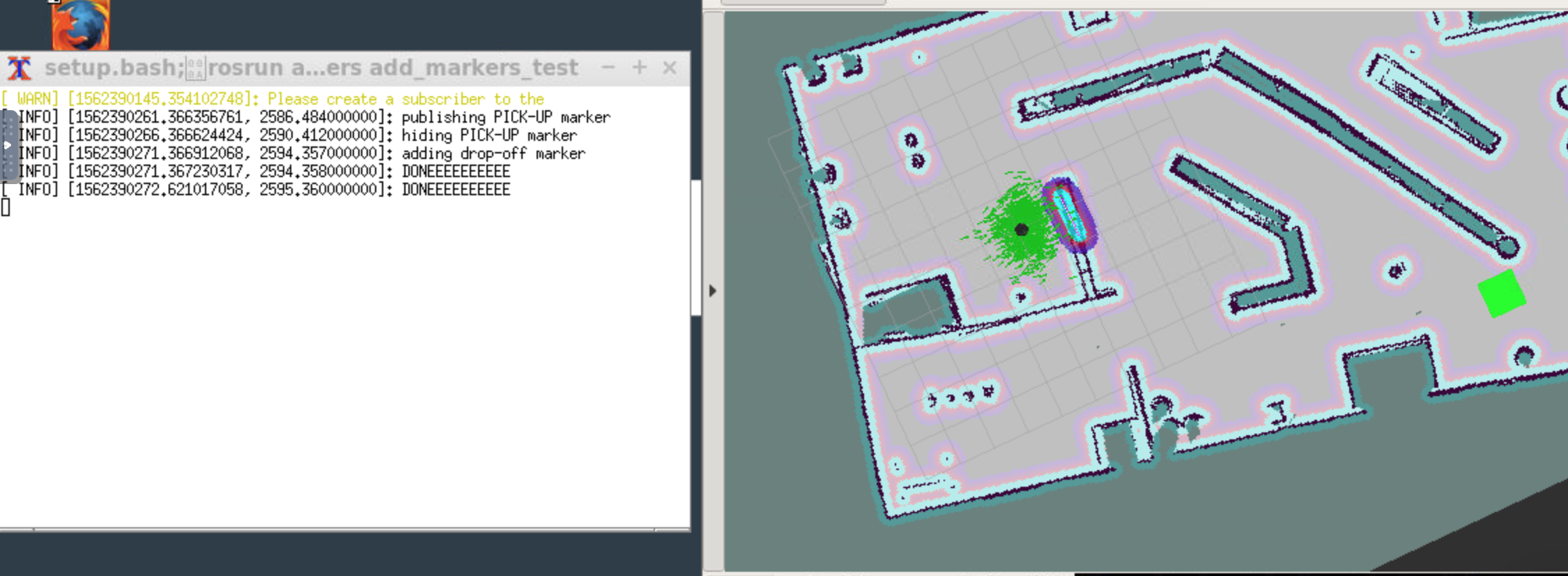 Fig.5: virtual object addition test
Fig.5: virtual object addition test
To simulate a full home service robot capable of navigating to pick up and deliver virtual objects, communication was established between the add_markers and pick_objects nodes via a "/goal_reached" topic. For this purpose modified versions of previous test codes were created respectively pick_objects.cpp and add_markers.cpp. The entire package can be launched using:
cd ~/catkin_ws/src/scripts
./home_service.sh
The result can be seen in the gif display above or at one of these video links:
- home-service-robot's rviz window: https://youtu.be/iy3RJXRyFkw
- home-service-robot's rviz with messages: https://youtu.be/mAXX1b7Ap_k
